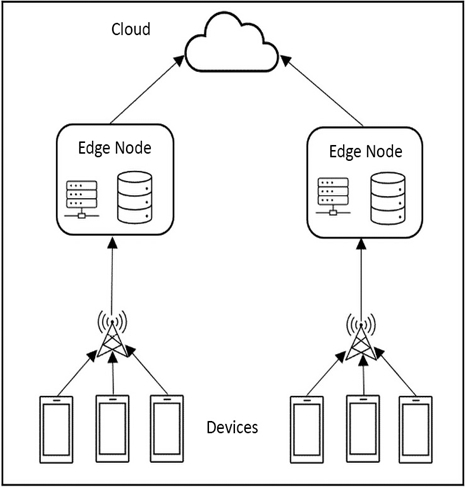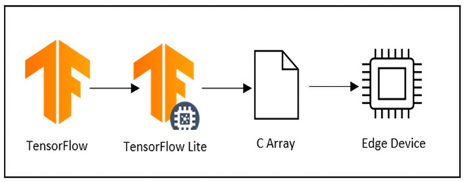To understand the benefits of edge computing, we can illustrate how the edge nodes are positioned, as within the following diagram. Edge nodes are hardware devices or computing platforms situated closer to the data source, such as IoT devices or sensors, in a network. They facilitate localized processing and storage, reducing the need to send data back and forth to a centralized cloud or data center alongside the cost of infrastructure and compute in the cloud:

Figure 6.2 – Process of edge computing
We can see that we simplify the required processing by moving it to edge nodes, unlike a centralized system that has to handle all data processing workloads simultaneously. The devices will transmit the data to a base station, which then forwards the data for processing within an edge node. Edge nodes can have storage and processing capabilities that help them to process and store the data before accordingly transmitting it to the cloud for further analysis and storage, which ultimately also reduces latency.
Furthermore, it is easier to meet regulatory and compliance requirements with this way of working with data. For example, in healthcare and finance, there are stringent data sovereignty regulations that often require data to be stored and processed within a country’s borders. By ensuring that data is both stored and processed locally, edge computing simplifies compliance with these regulations. This is especially beneficial compared to a centralized data management model, which becomes complex and challenging when dealing with data across international boundaries. In the healthcare sector, laws such as the Health Insurance Portability and Accountability Act (HIPAA) in the United States and the General Data Protection Regulation (GDPR) in Europe impose strict controls on personal data handling, making edge computing an attractive solution for maintaining compliance. Similarly, in the financial industry, regulations regarding data residency and protection are stringent, and edge computing offers a way to adhere to these rules while still leveraging the benefits of modern data processing technologies.
Additionally, security is a big advantage of this type of decentralized network, given that we are only creating, processing, and analyzing sets of data that are needed at an instance. A centralized system would let attackers access all data that is within the system, but a decentralized system would reduce the impact of this, given that they can only get what is currently being processed at an instance. This also would make customers feel better about their privacy being adhered to.
Now, let’s look at a sample practical exercise where we can see the advantage of processing data at the edge.
A sample edge computing exercise
In this exercise, we would like to simulate edge computing by using an ESP32 device as the edge device, which will be where we both collect the data from and run processing based on an ML model at the same time.
The following is a diagram for how we will have this workload work:

Figure 6.3 – Workflow of TensorFlow edge computing exercise
To start off, we will use a TensorFlow Keras Sequential model, which we will then convert into TensorFlow Lite, the model type that is built for use within microcontrollers. TensorFlow’s Keras Sequential model is a linear stack of layers used for building neural networks (NNs) in a straightforward manner, where one can easily define and train models by adding layers in a sequential order. On the other hand, TensorFlow Lite is a lightweight solution from TensorFlow that facilitates the deployment of ML models on mobile and embedded devices, offering a smaller binary size and faster inference times, making it suitable for edge computing scenarios and on-device computations.
From TensorFlow Lite, we will then use a converter to generate a C array, which holds the trained model that we can then use to deploy to our ESP32 device. In this practical, we will be using the terms TensorFlow and TF – its abbreviation – interchangeably.
For the data, we will be predicting temperature and humidity, as you can tell by our usage of the DHT11 sensor.
First, we can look at getting the software requirements.

